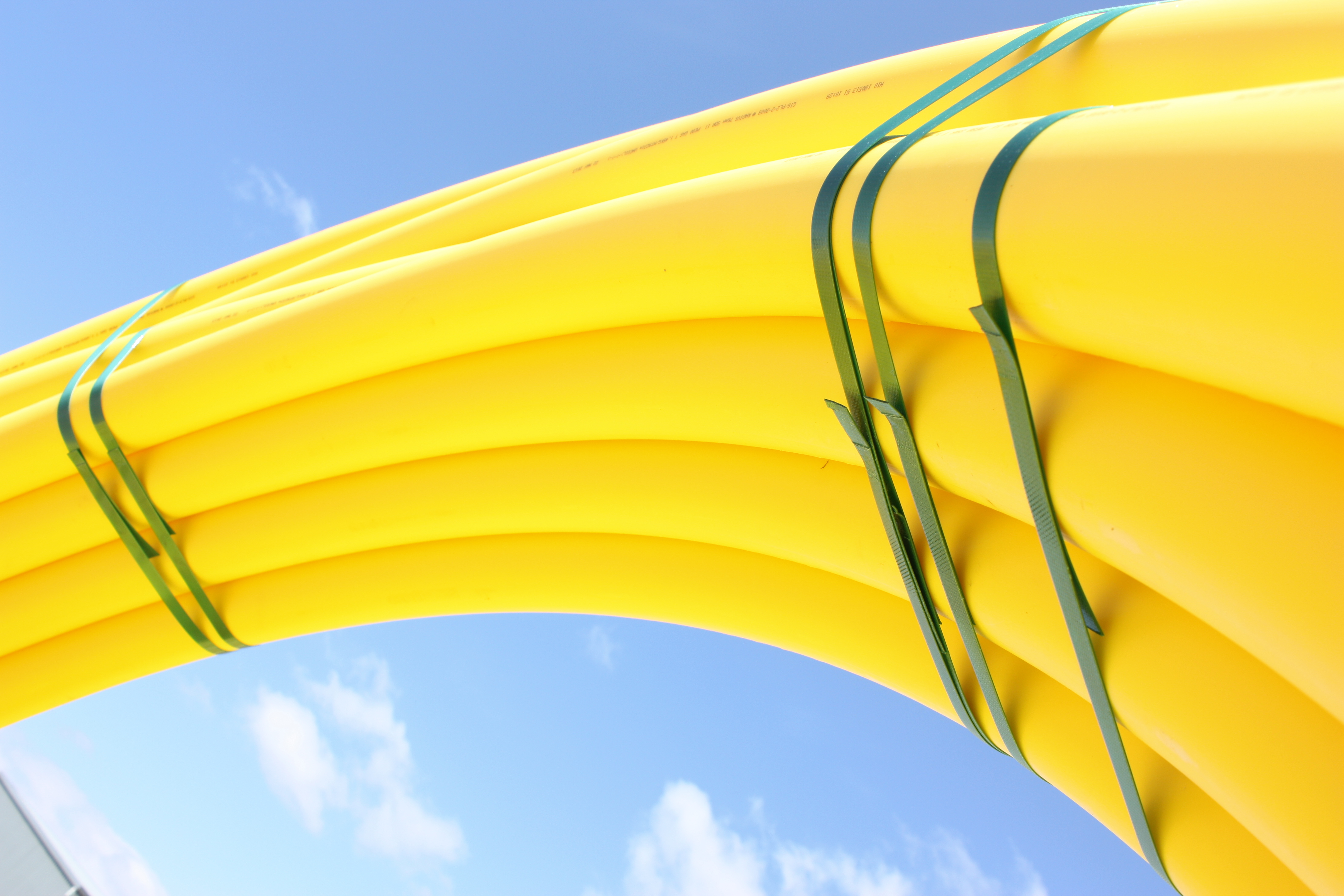
Since the 1970’s, the French gas company, Gaz de France, has installed one of Europe’s biggest plastic pipe systems for distribution of gas. The installation of plastic pipes has meant high safety and considerable reductions in costs compared to traditional piping systems.Gaz de France was the first European gas company to turn to plastic pipes systems in the 1970’s. The material of choice was HDPE because of its safety, reliability and low cost. Today, plastic pipes cover more than 100,000 km of the gas distribution network in France. This in comparison to the total pipe network of 170,000 km. It means that more than 5,000 km of plastic pipes have been installed every year. This makes the network one of the biggest plastic pipe systems in Europe. The French plastic pipe system serves 9,000 municipalities or more than 75 percent of the national population.
Over the years, these systems have replaced a large part of the traditional pipe systems in France. Mainly because plastic pipes are flexible and easier to install. Plastic pipes also require less maintenance than other types of pipe systems, says Mr. Michel Paty, former technical director of distribution for Gaz de France.
“A plastic pipe represents the same quality as a well maintained steel pipe. Previously steel pipes were the most widely used type of pipes for gas in France. But now plastic pipes have replaced most of them because they meant a important reduction of approximately 30-40 percent in costs for production and maintenance,” says Mr. Paty.
Even though plastic pipes have a higher level of flexibility, are lightweight and easy to install compared to traditional pipe systems, Mr. Paty stresses that it is still crucial that the personnel is trained in correct installation.
“Together with the French Association of Gas (l’Association Française de Gaz), Gaz de France has developed a quality system with guidelines on the production, installation and maintenance of plastic pipe systems. Also, an educational program has been developed in order to qualify the personnel according to the existing guidelines,” says Mr. Paty.
Mr. Paty emphasised that in addition to the quality system and the security guidelines of the pipe systems, plastic pipes can be produced in long lengths which reduces the number of joints and consequently also the risk of leakages.
Facts
- During the 1960’s and 1970’s, the discovery of natural gas in Europe meant an enormous growth in the use of gas for heating purposes in buildings and industries. Gaz de France chose to distribute gas in medium pressure (4 bar) steel pipes in the beginning of the 1960’s. In the 1970’s, plastic pipe systems started replacing steel and cast iron gas pipe systems.
- Since the past 30 years and until 2007, plastic pipes had replaced 30,000 km of all pipes made from grey cast iron in France.
- In France, new municipalities use only plastic pipes systems for gas.